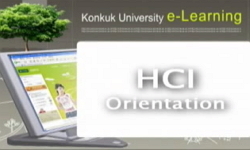This study was conducted in order to understand elementary students' internet community participation types. In order to do that, diverse factors that affect such patterns need to be examined, which is possible through the analysis of interactions bet...
http://chineseinput.net/에서 pinyin(병음)방식으로 중국어를 변환할 수 있습니다.
변환된 중국어를 복사하여 사용하시면 됩니다.
- 中文 을 입력하시려면 zhongwen을 입력하시고 space를누르시면됩니다.
- 北京 을 입력하시려면 beijing을 입력하시고 space를 누르시면 됩니다.
효율적인 학급경영을 위한 초등학생의 학급 인터넷 커뮤니티 참여유형 및 상호작용에 관한 사례연구 = The Case-Study about the Elementary School Students' Internet Community Participation Types and Interaction
한글로보기부가정보
다국어 초록 (Multilingual Abstract)
This study was conducted in order to understand elementary students' internet community participation types. In order to do that, diverse factors that affect such patterns need to be examined, which is possible through the analysis of interactions between students, students and teachers, and students and environment.
For this study, close observation was conducted for 8 month period from March 1, 2005 to October 31, 2005 on internet communities organized by students in a 6th grader class in Rainbow Elementary school. As a methodology, the educational ethnography, a qualitative researches based approach, was employed.
The study reveals 6 different patterns in elementary school students' internet participation; 'beauty in every aspect type', 'double life type', 'saen-nym Saen-nym refers to Korean typical scholars, who lived in Chosun Dynasty. They were intelligent and knowledgeable but not pursuing success in the world. They were famous for frugality, strict self-disciplines, and sarcastic criticism toward the world. type', 'good boy and girl type', 'faultfinder type', and 'outcast type.'
The 'beauty in every aspect type' students are intellectually excellent, working under good internet access environment, good at writing, quick at keyboard usage, and excellent in dealing with functions provided by online community software such as file-attachment and scrapping.
The 'double life type' students are not as intellectual as those in 'beauty in every aspect type' but actively participate. Many of them behave very differently in online communities compared to in classroom.
The 'saen-nym type'students are good at using computers, though excelled by 'beauty in every aspect type' students. They like to criticize other students' writings logically and intellectually. Instead of showing upin every bulletin board, they concentrate on their interested activities.
The 'good boy and girl type'students are always logged on to the internet, real all postings, and reply all, which usually end up with good words.
The 'faultfinder type' students reply other students' postings in less intellectual but more emotional ways compared to 'saen-nym type' students.
finally, 'outcast type' students recognize them as not being accepted by other students and are intimidated in activities in classroom. But friendly messages posted online by teachers or other students are good consolation and encouragement to them. This suggests that online activities could be an educational healing to them.
From elementary students' interactions with other students, teachers, and internet environment, findings could be drawn as followings in terms of internet community activities. First, positive interactions among students are seen such as raising interests in each other, consulting with others, cooperation, and participation. Negative interactions are also detected such as criticizing, invasion of privacy, and spying-on. Second, in the interactions between students and teachers, students recognize teachers' activities as positive when they organize and operate communities in a way that chances are given fair to every student for participation and when they create atmosphere that is encouraging and inspiring students. On the other hand, if teachers praise some students preferentially or reply their postings selectively, students regard it as favoritism and think negative about it. Third, the internet access environment, amount of time allowed for computer usage, and parents understanding on the internet also affect students'participation in classroom internet communities. If parents are generous to children's internet usage and provide goodphysical environment for internet access, students are able to comfortably log in communities and post their candid opinions.
To summarize, based on the research on elementary school students' internet community participating patterns and interactions with their environment, this study searches teaching directions and find suggestions for succeeding studies and their methodology.
목차 (Table of Contents)
- Ⅰ. 서론
- A. 연구의 필요성 및 목적
- B. 연구문제
- Ⅱ. 연구 방법
- A. 연구 대상
- Ⅰ. 서론
- A. 연구의 필요성 및 목적
- B. 연구문제
- Ⅱ. 연구 방법
- A. 연구 대상
- B. 연구 유형
- C. 연구 설계 및 절차
- D. 자료 수집 및 자료 분석
- Ⅲ. 연구 결과
- A. 인터넷 커뮤니티 상호작용 유형
- B. 인터넷 커뮤니티 참여 유형
- Ⅳ. 본 연구의 시사점 및 제언
- 참고문헌
- ABSTRACT
동일학술지(권/호) 다른 논문
-
- 이화교육논총
- 오두경
- 2006
-
중학교 2학년 「전기」단원에서 순환학습 수업 전략의 개발 및 적용 효과
- 이화여자대학교 교육대학원
- 홍혜인
- 2006
-
- 이화여자대학교 교육대학원
- 이미혜
- 2006
-
- 이화여자대학교 교육대학원
- 김잔디
- 2006




 RISS
RISS






